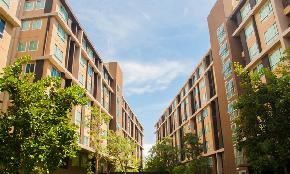 Morris Neal, RA
Morris Neal, RA
As a property owner, the day-to-day operation of your building has many moving parts. While most of the actions you will take will be reactionary, being proactive and prepared may be your best line of defense. Looking back on the previous year, you may have incurred some unanticipated maintenance expenses that required you to adjust your budget, creating deficiencies in other areas. Creating a detailed and realistic facilities budget for the future can keep your facility running at its fullest functioning potential, also saving you time and money. In addition, if you are looking to acquire a property, lenders will want an itemized forecast of your facilities budget. Owners who plan strategically can be more flexible and better prepared when selecting a future site.
First Things First
Before creating a budget, getting a Facility Condition Assessment (FCA) will be paramount to understanding what your building needs today and in the future. A full FCA can determine short and long term costs for the maintenance of your buildings’ components. An FCA will identify the following:
- Routine and/or deferred maintenance requirements
- Systemic deficiencies
- Remaining Useful Life (RUL) of all major building systems
- Capital replacement needs
- Overall system compliance with the original design/engineering intent
- Compatibility with contiguous systems
- Prioritized list of repairs
Assessment in Hand, Now What?
Now that you have your assessment, you can start to realistically and effectively plan your facilities budget based on the priorities established in your FCA. The larger components come to mind immediately: HVAC/Mechanical/Electrical systems, plumbing, and roofing. On average, these systems have a 10-25 year shelf life. If your building is 10 years or older, you may want to start setting aside funds so that when significant repair expenses arise, they won’t be such a blow to your cash flow. Having a contingency budget now for deferred maintenance can better insulate you for a larger cost item down the road. Lenders will also take these big ticket items into consideration to ensure that the property doesn’t depreciate or become unoccupied due to unfavorable conditions.
Not-So-Obvious Factors
Of course, when planning your facilities budget these large items previously mentioned are top of mind, but what about those little things that may not seem so obvious but can add up quickly? Our work force is changing dramatically – large corner offices are falling out of popularity and are being replaced by smaller work spaces, even flex space. This could require a change in office furniture/equipment. What about those little day to day things, like replacing light bulbs in fixtures and filters in HVAC systems? Everything thing adds up and should be accounted for in your budget.
An Ounce of Prevention
Budgeting for maintenance may increase the life of your systems, better preparing you for large line items in the future. HVAC systems that are regularly maintained (new filters, duct work cleaning), plumbing that is checked for leaks and repaired, and installing energy-efficient lighting may not only prevent large fixes in the immediate future but may decrease overall operating costs.
Creating a comprehensive facilities budget that can be successfully executed and maintained requires work up front but will pay off in the long run. Having an experienced consultant to guide you through the process can help you to maintain the physical condition of your asset and sustain the value of the property. An effective field professional can help a real estate owner effectively budget, prioritize resources, and even offer an opportunity for cost savings.

















 Copyright © 2024 ALM Global, LLC. All Rights Reserved.
Copyright © 2024 ALM Global, LLC. All Rights Reserved.